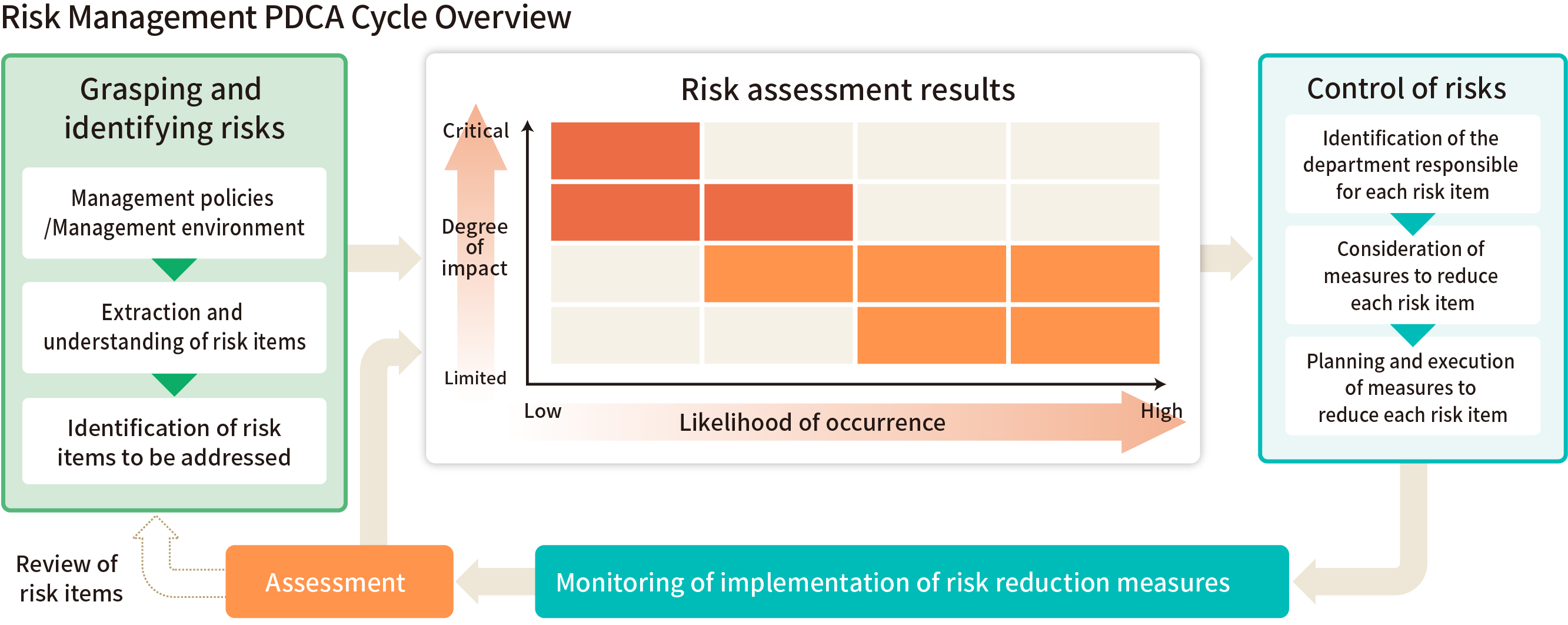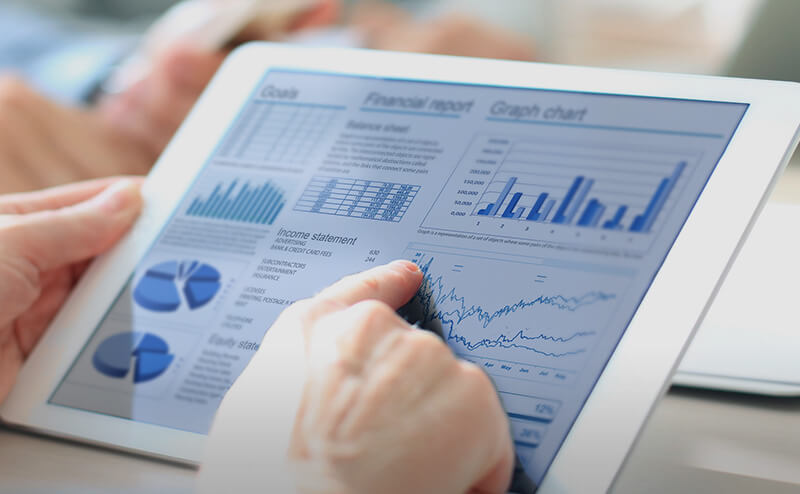Risk Management
Risk Management process
To respond to changes in the environment accompanying the expansion of its business domains, the Group has established a Risk Management Committee and is building and maintaining a company-wide risk management system to regularly detect, identify, evaluate, control, and monitor the risks borne by the Group. The committee discusses individual risk reduction measures, evaluates their effectiveness, and reports the results to the Board of Directors.

Business risks
The Company acknowledges the following items as major risks that may affect its management, business performance, and other aspects of its operation.
| Risk item | Theoretical Risk Scenarios |
|---|---|
| 1. Business environment |
|
| 2. Food safety |
|
| 3. Legal Regulations |
|
| 4. System Outage |
|
| 5. Disasters and Crises, etc. |
|
| 6. Climate change |
|
| 7. Changes in Customers |
|
| 8. Irrecoverable Debts |
|
| 9. Investments in/Impairment of Fixed Assets |
|






